Comparing VLF and PI Metal Detectors in Hot, Mineralized Soil
Published by Eric Reed on 01/06/16
A question I often hear from metal detectorists is, “I don’t have access to a more-costly pulse induction (PI) detector. Will my very-low-frequency (VLF) machine work in heavily mineralized soil?”
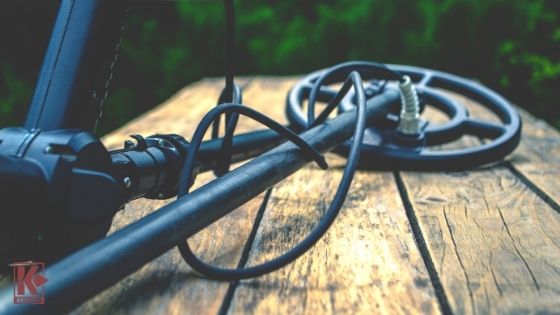
Metal Detector Technologies
What the detectorist is really asking is, “Is it even worth trying to use a VLF machine on mineralized soil, or am I wasting my time?”
The answer depends on a wide variety of factors, including the capabilities of the detector, the specific composition of the soil, and the skill of the detectorist.
It also depends on the expectations of the detectorist. Do you expect that a particular VLF metal detector might actually be able to detect almost everything a PI machine can detect?
Different Metal Detector Technologies
When deciding on a hobby metal detector you will likely run into three technologies – Beat Frequency Oscillation (BFO), Very Low Frequency (VLF), and Pulse Induction (PI). Each technology offers the user positives and negatives and may work better or worse depending on a number of factors. You will want to choose based on your hunting style, skill level, and/or detecting requirements. A question often asked to Kellyco is “how do you make that decision?” Read on to get a basic rundown of how each technology works and its most common use.
Beat Frequency Oscillation (BFO)
Hobby metal detectors in the BFO category are typically basic, user-friendly (‘turn on and go’) metal detection technology. There are two rings of copper coiled around iron or steel. A current of energy passes through them and transmitted into the ground. When the signal is broken or disturbed by metal, the detector creates an audible change in a sound audibly alerting the user to a potential target. Because of how basic these detectors are, they are a great choice for novice detectorists who want to hunt in clean areas. Detectorists who are looking for an easy to use budget-friendly option may find them acceptable as well. The main thing to remember is that they will pick up on any metal in the ground without being able to tell the difference between a “good” or “bad” target. We currently do not carry any BFO metal detectors.
Very Low Frequency (VLF)

Very Low Frequency Metal Detector
This type of metal detector uses two coils, one sends and the other receives, to pick up on targets in the ground. The sender coil creates a magnetic field that reacts to metal objects. When a target is found, a current is formed, the receiver coil takes the signal and amplifies it to be heard through a speaker or headphones. Many detectors can even translate the signal into a number based on how strong the magnetic current is.
Because of its ability to give information back on targets, there are lots of metal detectors that use VLF technology. The control box is where the magic happens with this type of detector. It interprets the signal and turns it into easy to understand visual and audio cues. Depending on how much work goes into the interface and controls, you can ignore targets you don’t want to dig, see about how deep a target is, change the sensitivity, and much more.
Most detectors are set up for specific types of hunting. For example, the settings on gold detectors like the Nokta Makro AU Gold Finder take into account the hot rocks and ground that are encountered in a goldfield. Some of the newer detectors, like the Garrett AT Max or Minelab Equinox Series, are set up to be used in multiple soil types with preset programs that change settings fairly easily.
Pulse Induction (PI)
While the previous types of metal detector technologies used two coils working together, Pulse Induction (PI) can use one or more coils in a much different way. The coil sends out bursts of electronic currents that bounce back when it hits a metal object. The best way to think about PI is that it’s like a bat’s echolocation. There is no way to tell the difference between targets – just that there is one.
The greatest advantage to these types of detectors is that they search much deeper than the BFO or VLF. If you plan on searching for very deep targets a detector such as the Garrett Deepseeker will give you the best results. Many beach and underwater detectors, such as the White’s Surfmaster PI Dual Field use PI as well. It is very stable and reliable at finding targets even in the salt found in beach water and sand.
There are many metal detectors on the market for a wide range of needs and experience levels. It’s easy to get overwhelmed or choose one that does more than you will ever need it to. Finding the detector that fits your needs boils down to choosing the features you need. This is why we have a team of metal detecting experts who can help match you up to the right detector. Give us a call and we would be more than happy to assist you!
Comparing the Detectors
In this article, I throw speculation aside, put coil-to-soil, and engage the question of VLF performance in heavily mineralized soil conditions. To do this, I traveled to one of the most heavily mineralized patches of ground in Virginia, and — thanks to the awesome folks on the Kellyco team! — went head-to-head-to-head with three of the most popular, technologically cutting-edge metal detectors currently on the market: the Garrett ATX ground-balancing PI detector, the Minelab Equinox 800 VLF/LF Multi-IQ technology detector, and the Garrett AT Max VLF detector.
To level the playing field, all of the detectors were used in their stock coil configurations, as shipped from the factory. The Garrett ATX PI detector was outfitted with the 10″x12″ Double-D Coil, the Minelab Equinox 800 carried the 11″ Double-D Smart Coil, and the Garrett AT Max was sporting the 8.5″x11″ PROformance Double-D Search Coil.
In addition, fresh batteries of the same type were used in each machine, and each detector was used for about the same amount of time during the evaluation to ensure even battery wear.
It’s important to note the significant differences in how each of these detectors function, and why they were selected for this test.
Let’s take a look at each of the detectors.
Garrett ATX Pro
The Garrett ATX is a ground-balancing PI system that emits 730 pulses per second using a non-adjustable multi-frequency technology that operates between 0-73khz. The detector uses multiple internal coils working together simultaneously as both transmitter and receiver. Each of the 730 millisecond-long pulses create a magnetic field within the object being detected, which then immediately collapses and sends a response pulse back to the coil.
If the composition of the target is more dense (nonferrous, such as silver), the pulse returns to the coil faster. If the target is less dense (ferrous, such as iron), the pulse returns to the coil slower. Those differences in return pulse-speed are translated into two different tones which indicate ferrous or non-ferrous.
Here’s a good way to think of it. When you walk into a large, completely empty, unfurnished room and you speak, your voice echoes back loudly and quickly. That’s because the hard, densely formed surfaces (much like nonferrous metals) are impenetrable to the sound waves, and sharply reflect the sound wave pulses. However, once the room is furnished with carpet, furniture, curtains, etc, a larger percentage of the sound waves are absorbed by those less dense, more porous items (much like ferrous metals). A lesser number of sound waves are reflected back, much more slowly, resulting in no echo.
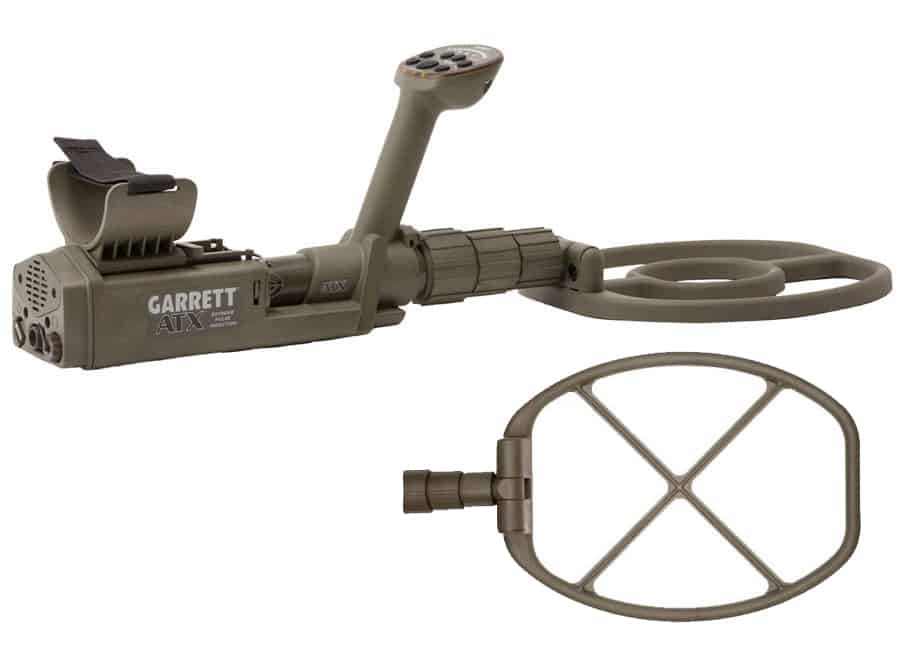
- The ATX has notch discrimination capability, allowing specific target response ranges to be eliminated from audible detection.
- It also has both a manual and automatic ground balance/tracking capability, all metal mode, pinpointer mode, and frequency scan capability that scans the surrounding environment and selects the optimal operating frequency for the ATX.
- The extremely rapid pulse lengths allow the ATX to penetrate highly mineralized ground that traditional VLF can not.
- The rapid pulse lengths can't be easily separated and measured, which is why the ATX can't perform high fidelity metal discrimination like traditional VLF machines. The ATX does have, however, an Iron Check function that is extremely useful.
Combined with a number of other fine-tuning functions such as sensitivity, threshold and motion/non-motion mode, the ATX is a robust and formidable machine.
The ATX was left at factory defaults: Sensitivity (10), Discrimination (1), Threshold (7), Ground Track (Off), and Motion Mode (On). Iron Check was used frequently.
Equinox 800
The Minelab Equinox 800 brings a new perspective to the detecting world through the implementation of what Minelab calls Multi-IQ technology. The Equinox 800 can simultaneously operate on up to five VLF and LF frequencies (5Khz, 10Khz, 15Khz, 20Khz, 40Khz), designed to enable detection of small and large targets, both ferrous and non-ferrous. Or, each individual frequency (except for 20Khz and 40Mhz) can be selected separately, allowing the Equinox to operate as a traditional single frequency VLF detector.
There are a series of factory-preset detect modes: Park, Field, Beach, and Gold. These allow you to jump to different situations with slightly varying levels of discrimination, sensitivity, recovery speed/separation, number and type of tones, and so on. Each mode has two levels, the second of which is generally more finely tuned for that environment.
The Equinox 800 was operated primarily in Field 2, however, Field 1, Beach 2, and Gold 2 were also tested. In all modes, Multi-Frequency was used in order to thoroughly vet the detector’s Multi-IQ technology in the heavily mineralized environment. The all-metal mode was utilized frequently to assess the detector’s target separation fidelity and recovery speed. Tracking ground balance was unable to be used, however, because of the highly volatile, scattered soil conditions.
- Weight: 2.96 lbs
- Frequency: Multi, 5kHz, 10kHz, 15kHz, 20kHz, 40kHz
- Waterproof: EQUINOX is Fully Submersible, Ideal for Detecting at the Beach and in Rivers, Streams and Lakes (3m / 10-feet)
- Warranty: 3-year limited (detector), 1-year (battery)
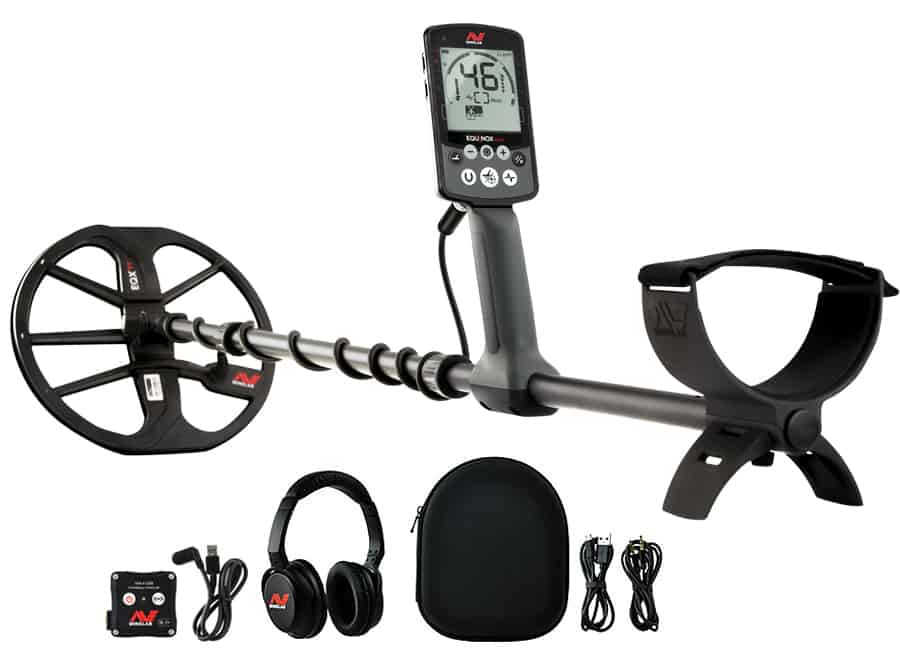
- The Equinox 800 has a noise cancelling feature that enables the machine to deconflict with interfering nearby detectors, power lines, or other forms of electromagnetic interference, and automatically select the optimal operating frequencies.
- This is in addition to the ground balance capability, which optimizes the detector based on soil conditions.
- Ground balancing the Equinox 800 can be done manually, as traditionally done with most detectors, or it can be set to automatic/tracking ground balance for more highly mineralized conditions or changing conditions.
- Field 2 seemed to provide the most consistency once the recovery speed slowed down to 5, and with constant ground balancing.
- The Equinox is also able to easily receive factory software updates by connecting the detector to a computer and following a few simple steps.
- The Equinox 800 struggled throughout the day to consistently maintain lock on targets, or in several cases even detect the target.
- The Equinox 800 can take some time to learn. It has a lot of detailed advanced and custom setting options that allow you to fine-tune the machine, such as threshold, threshold pitch, number of target tones from 2-50, tone pitch, and tone break.
- However, good results can be obtained with the Equinox straight out of the box using one of the standard factory-preset modes.
- Checks of the Field 1, Beach 2, and Gold 2 did not provide any increase in detection capability or consistency, although out of those three modes, Gold 2 did the best.
For this evaluation, the machine was operated first with the factory-installed v1.75 software, and then upgraded to the v2.1.12 update and tested again.
Garrett AT Max
The Garrett AT Max is essentially a fusion of technology from Garrett’s AT Pro and AT Gold machines, combined with a number of enhancements. Operating at a slightly lower 13.6Khz operating frequency (compared to the AT Gold at 18Khz and AT Pro at 15Khz), the AT Max is optimized to shoot deeper and detect a wider range of target materials than its predecessors.
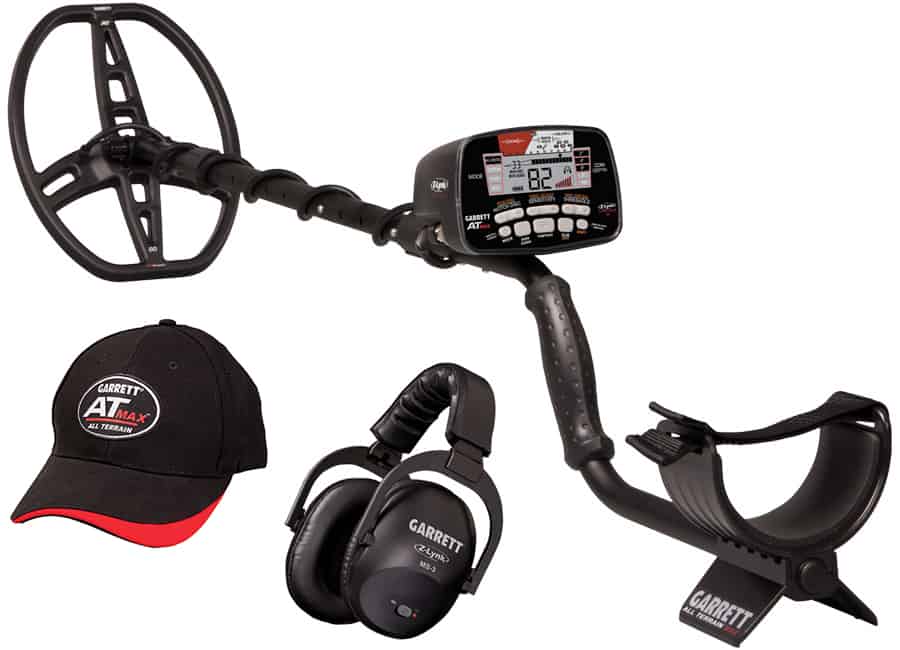
- Noticeable depth increase and ability to discern the tiniest of targets.
- The increased power combined with a manual/automatic 175-point ground balancing system also means that the Max is designed to handle a wide range of soil or water compositions.
- In terms of target detection and identification, the AT Max was relatively consistent. Interestingly, this was especially true on weak/uncertain targets if the coil was cocked at approximately a 30-45 degree angle while sweeping the target.
- The significantly increased RF transmit power and optimized micro-electronics of the Max mean the system operates much "hotter" than the Pro or Gold. This may require some additional fine-tuning of the sensitivity to avoid spurious tones.
- Required frequent ground balancing as well as sensitivity adjustments.
- The detector would occasionally become overloaded and have furious fits of rapid-fire beeps, squeaks and squawks which required a power down, restart and ground balance.
The AT Max was operated primarily in Zero Mode, no discrimination, with the sensitivity stepped back from the default to the fourth of the eight sensitivity LEDs. “All Metal” mode was also tested.
Hunting in Mineralized Soil
The central Virginia location selected for the test is arguably some of the most heavily mineralized soil in the state. It was entirely composed of the notorious central Virginia red dirt/clay. It’s so intensely mineralized that it met the criteria to be called what locals call “blackjack.”
The entire site was also completely saturated with small iron square nails and other scrap iron detritus from a large structure of years long past, harkening back to the site’s well-established Civil War history.
Those like myself who have participated in the large Civil War relic-focused organized group detecting hunts in central Virginia know first-hand how dramatically the deeply mineralized soil and pockets of blackjack can affect detector performance. It’s simply an entirely different detecting world, which requires the detectorist to completely modify their approach and tactics.
I wanted this evaluation to really stress the machines in the worst-of-the-worst detecting conditions, and this site did not disappoint. The frosting on this gnarly detecting cake was the addition of a string of high-voltage power lines that ran directly along with the small site, radiating plenty of electromagnetic interference.
Preparing the Battlefield
I began by performing a factory reset on all three detectors to ensure they were all starting on a level playing field. Next was a thorough frequency scan/noise canceling to eliminate or at least reduce interference between the detectors themselves, the power lines, and the environment in general. Due to the saturation of small iron targets throughout the site, a 2-foot by 2-foot patch of ground was designated and fully cleared of all targets (using all three detectors) and was used as the designated ground balance point throughout the hunt.
On to the Hunt
>The test attack plan was methodical. First, I scanned the area with the Garrett ATX to identify a prospective non-ferrous or ferrous target. Once a target was found, I then scanned the target with the Equinox 800 and AT Max. This provided an opportunity to observe each detector’s ability to detect the target, type of tones/VDI indicated, and compare that data with the actual resulting find.
One relic found was the back half of a two-piece probable Civil War eagle button. This target was detected to some extent by all three detectors.
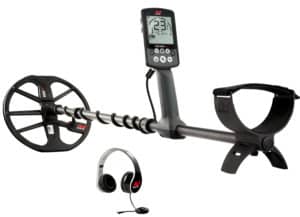
|

|

|
| Garrett ATX Pro | Equinox 800 | Garrett AT Max |
| The ATX was the first to detect the button back, providing solid non-ferrous target tones in amongst the other ferrous signals. In fact, this particular target search ultimately provided an excellent comparison between the ATX's ferrous and non-ferrous dual-level tones capability. |
The Equinox 800 was able to sporadically detect the button back, albeit with some difficulty, and only from particular angles
of approach. The 800 provided hit-and-miss tones in the 16-18 VDI range. |
The AT Max detected the target straight away, although only from certain angles of approach, providing consistent high tones in the 60-62 VDI range. |
>Another relic found — a Civil War-era Colt .44 caliber pistol bullet — followed a similar pattern as the button. All three detectors indicated a possible non-ferrous target; however, two did so better and more consistently.
The ATX sniffed out the bullet immediately, sounding off with unquestionable non-ferrous tones. A verification using the ATX’s Iron Check button helped confirm the target was most likely not iron.
The Equinox 800 signal and VDI bounced rather inconsistently between single digits and mid-teens, providing a potential indication of a viable non-ferrous target, but not really consistent enough to compel one to dig the target.
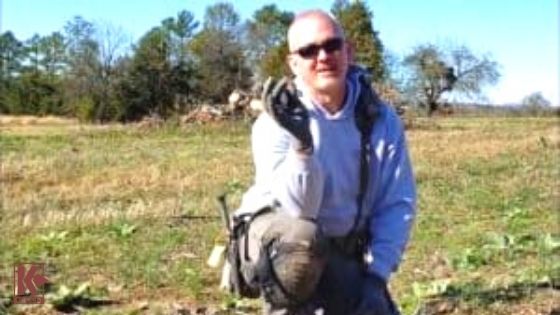
Eric Reed, a career Air Force veteran, took three of Kellyco’s most popular metal detectors for a spin in Central Virginia
The AT Max detected the bullet fairly consistently from all angles, with a VDI in the 48-52 range.
There were dozens upon dozens of square nails and other pieces of iron dug, a number of which were initially identified incorrectly by the ATX as non-ferrous, probably owing to the items being bent and heavily oxidized/rusted. However, the ATX’s Iron Check feature helped correct the IDs to ferrous in most cases. Small flat pieces of iron and heavily bent iron (90 degrees or more) seemed to cause the most confusion for the ATX, which occasionally was unable to be dispelled by the Iron Check.
As an additional note, the Garrett Pro AT (“Garrett carrot”) pin-pointer performed well overall. The key was ground balancing at every hole, and often several times at each hole. The performance of the pinpointer was comparable with past hunts in mineralized soil that I have experienced.
Conclusion
As expected, in this extremely harsh mineralized environment, the PI machine won the day. The ATX was able to completely defeat the mineralization, power line interference, and was able to separate targets with ease. It did get spoofed occasionally by random-shaped iron and didn’t seem to shoot as deep as I’ve seen from other PI machines, but it performed solidly.
The VLF machines had their strengths and weaknesses, but they were indeed able to detect and correctly identify a number of targets in the mineralized conditions. The performance was not consistent, requiring my liberal digging of tentative targets, and detection depth was significantly reduced by the heavy mineralization. The somewhat surprising discovery, however, was the degraded performance of the Equinox 800 while operating in multi-frequency, regardless of detect mode. While the Equinox wasn’t skunked, the AT Max clearly surpassed it in both target detection and target identification during this test. I suspect that if the Equinox 800 were dropped into single frequency mode it would level the playing field in a mineralized environment. Perhaps that’s a test for another day!
In the end, my assessment of the question, “Is it even worth trying to use a VLF machine on heavily mineralized soil?” remains a qualified, yes. If you’re still unsure, consider renting a VLF metal detector before making a purchase.
I’m sure there are some that will read this and reflect that they’ve done even better in mineralized conditions with the Equinox 800 or AT Max, and of that, I have no doubt. Wildly varying soil conditions play a huge part in the success or failure of any hunt, and this was a beast of a test environment. It was a trifecta of mineralization, a blanket of iron trash, and electromagnetic interference.
I have historically fared well with single frequency VLF machines on heavily mineralized soil, sometimes even better than those with PI machines. Will a PI detector consistently perform better in mineralized conditions? Absolutely, hands down, no question about it.
There is no substitute, however, for knowing your machine inside and out and in all conditions. As the saying goes, success is ultimately determined by the 80/20 rule, which translates to 80 percent operator expertise, 20 percent detector capability. An experienced detectorist that is able to deftly wield a machine with which they are intimately familiar will be successful in almost any conditions.
Happy Hunting!
